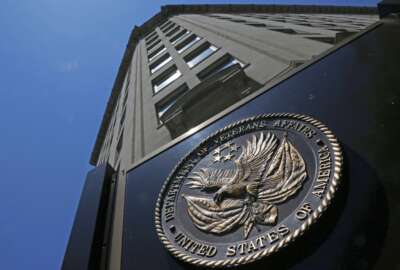VA chief says increased outreach, utilization drove massive budget shortfall
Secretary Denis McDonough says Congress needs to act by mid-September to prevent a delay in benefit payments to veterans.
Veterans Affairs Secretary Denis McDonough defended his department’s $15 billion budget shortfall on Tuesday, saying the red ink projected this year and next is being driven almost entirely by increased utilization of veterans benefits and health care.
The department notified lawmakers last week that on its current trajectory, the department would overspend its approved fiscal 2024 budget by nearly $3 billion, and that the 2025 budget the Biden administration proposed earlier this year would fall short by about $12 billion.
McDonough told reporters Tuesday the 2024 shortfall lies chiefly in the Veterans Benefits Administration, and was mainly driven by a VA outreach campaign urging veterans to file for the benefits they’ve earned. He said a similar situation led Congress to increase VBA’s authorized funding level toward the end of 2023 as well.
“We anticipate ultimately producing somewhere north of 2.5 million claims this year,” he said. “We had been planning for an aggressive growth rate up to 2.4 million, but because we’re performing and producing at such a high level, we need to raise that authorized level one more time. That will cover increased benefits paid under compensation and pension claims, as well as increased utilization of readjustment benefits — including the GI Bill and Veteran Readiness and Employment benefits.”
2025 shortfall
The much larger 2025 deficit, however, is mostly a result of revised projections that anticipate veterans’ use of VA’s health care system to continue to grow next year. Officials said nearly 413,000 veterans enrolled to receive VA health services over the past year, a 27% increase in new enrollments compared to the year before.
That, in turn, has led VA’s Veterans Health Administration to hire more employees — a turnaround from earlier plans. In its 2025 budget proposal, the department expected to reduce its total headcount by about 10,000 people. Instead, staffing has already increased by several thousand employees this year.
“I kept telling Congress during the course of the year that we believed we had the funding we needed, but if we needed more, we’d come back and ask,” McDonough said. “I also said I will not stop outreach, and we will continue to allow our local leaders to make strategic hiring decisions. And as they’ve done that, we’ve readjusted our full-time equivalent (FTE) goal.”
He argued the pivot to maintain or increase staffing levels in some locations has also increased access to care.
“Primary care wait times across the system are down 8%. Wait times for mental health care appointments are down 9%. Overall offerings of health care appointments are up 16%,” McDonough said. “In light of more timely access to more care for more veterans, we’ve determined that we need to revisit the FTE number, and that’s what we’ve done.”
No contingency plans yet
He declined to offer details on what actions the department might have to take if Congress does not approve the additional funding, but said VA does not anticipate needing to conduct reductions in force.
In order to cover this year’s shortfall, McDonough said additional funding authorizations would be needed by mid-September.
“And then we’re continuing to talk to Congress about the the additional needs for VHA and fiscal 2025, which obviously starts on October 1,” he said. “This is not a new issue, and we’ll stay on top of this and we’ll make sure that if we need contingency plans, we’re talking about those and informing veterans as well.”
Copyright © 2025 Federal News Network. All rights reserved. This website is not intended for users located within the European Economic Area.
Jared Serbu is deputy editor of Federal News Network and reports on the Defense Department’s contracting, legislative, workforce and IT issues.
Follow @jserbuWFED





